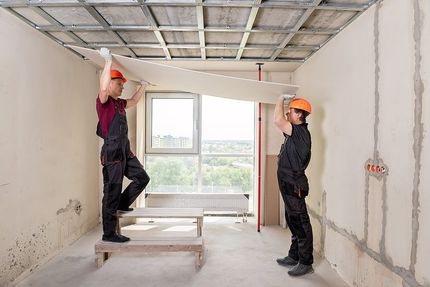Outstanding Sheetrock Repair Fort Worth to Boost Your Home
Outstanding Sheetrock Repair Fort Worth to Boost Your Home
Blog Article
Full Overview to Reputable and efficient Drywall Setup
Drywall installation is a critical part of any type of building and construction or restoration job, demanding a thorough method to ensure both performance and reliability. It is crucial to discover the subtleties of each step in the process, as they collectively contribute to the overall success of the drywall installment.
Essential Tools for Drywalling
When starting a drywall installation job, having the right tools is essential for attaining an expert surface. Crucial tools include a drywall blade, measuring tape, and a T-square, which are fundamental for accurate dimensions and smooth cuts. A drywall lift is additionally highly helpful, especially for ceiling installations, permitting less complicated handling of hefty panels.
For attaching the drywall, a cordless drill and drywall screws are needed. The drill needs to be equipped with a drywall bit to make certain efficiency and accuracy. In addition, a crucial tool is the drywall saw, which facilitates reducing around other obstacles and electric outlets.

Furthermore, protective equipment such as security glasses and a dust mask are vital to make certain personal safety during the installment process. Using the right devices not only improves the high quality of the installment but also improves the operations, making the job more effective general.
Preparing the Room

Following, evaluate the condition of the wall surfaces and ceilings. Repair any type of existing damages, such as openings, fractures, or peeling off paint, to make sure a smooth and also surface area for drywall application. Furthermore, check for electric outlets, plumbing lines, and HVAC ducts, noting their locations to stay clear of complications throughout installment.
It is likewise essential to determine the room precisely, identifying the dimensions of the walls and ceilings to calculate the proper quantity of drywall needed. Create an in-depth plan that consists of the format and positioning of the drywall panels.
Installation Techniques
Reliable installment strategies are vital for accomplishing a specialist surface in drywall projects. Correct dimension and cutting of drywall sheets are essential actions.
When hanging drywall, begin from the top and work downward, making sure that the lengthy side of the board is perpendicular to the framing. Protect the sheets with screws instead than nails, which give greater holding power and reduce the threat of standing out. Area screws every 12 inches along the sides and every 16 inches in the area of the board.
For edges, make use of corner beads to achieve sharp, clean edges. When mounting on ceilings, make use of a drywall lift or have a companion help in holding the sheets in area (drywall repair). Preserve a gap of about 1/4 inch above the flooring and ceiling to accommodate growth and contraction
Completing Touches

Once the tape is in place, it's time to apply the first coat of joint compound, additionally recognized as mud. Utilize a 10 to 12-inch taping blade to spread out check it out the compound uniformly over the taped joints, feathering the sides to mix with the bordering drywall.
Enable the substance to completely dry completely, normally 24 hr. After drying out, sand the surface area gently with fine-grit sandpaper to remove any kind of imperfections. drywall fort worth. Repeat the mudding and sanding process, generally a couple of coats, guaranteeing each layer is smooth and flush with the drywall surface area
Typical Errors to Prevent
Several Do it yourself enthusiasts run into challenges throughout drywall setup that can jeopardize the last results. One usual blunder is stopping working to properly determine and reduce drywall sheets.
An additional constant mistake is incorrect fastening. Making use of too couple of screws or nails can bring about loose drywall, while overdriving bolts can trigger the paper to tear, deteriorating the framework. It's critical to maintain regular spacing, usually every 16 inches, and to guarantee that fasteners are flush with the surface.
Moreover, not resolving wetness problems prior to setup can cause mold and mildew growth and structural damages. Always assess the environment and usage moisture-resistant drywall in high-humidity areas.
Verdict
Reliable and effective drywall installment needs precise focus to information throughout the procedure. Preventing common errors further adds to a professional result, emphasizing the value of accuracy and method in effective drywall projects.
It is vital to discover the nuances of each step in the process, as they collectively contribute to the general success of the drywall installation.When embarking on a drywall installation project, having the right devices is essential for read this post here attaining a specialist coating.For attaching the drywall, a cordless drill and drywall screws are needed.Effectively preparing the space is important for an effective drywall installment.Reliable installment methods are important for accomplishing a specialist surface in drywall projects.
Report this page